Understanding and Fixing Kitchen Disposal Issues
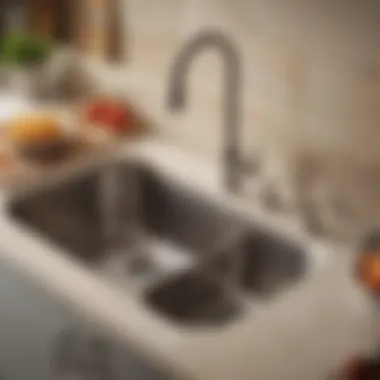
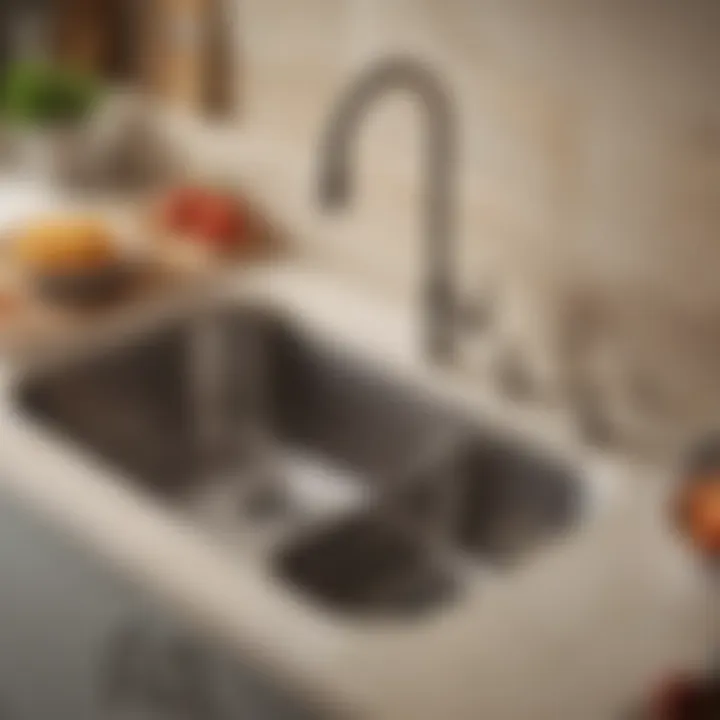
Intro
Kitchen disposals are often taken for granted in a household. They make food waste management simpler, helping to keep the kitchen clean and free from unwanted odors. However, like any other appliance, disposals can experience issues. Understanding these drainage problems is critical for maintaining their functionality. This section will delve into the common problems that can arise with kitchen disposals and offer insights into measures to ensure optimal performance.
By examining the mechanisms behind kitchen disposals, this article aims to equip home cooks and culinary enthusiasts with the knowledge they need to effectively troubleshoot and resolve these issues. Efficient disposal systems contribute to a smoother cooking experience, making it essential to know how to maintain and troubleshoot them properly.
In the following sections, we will cover relevant topics such as common causes of drainage issues, maintenance tips, and a systematic approach to addressing clogs or breakdowns.
Preamble to Kitchen Disposal Systems
Kitchen disposal systems are essential components in modern kitchens. They play a critical role in managing food waste. Understanding how they operate and why proper drainage is necessary is vital for maintaining their efficiency. When a kitchen disposal system fails, it can lead to a range of issues, including unpleasant odors and clogs. This article aims to provide readers with a comprehensive understanding of kitchen disposal systems and how to resolve drainage problems effectively. This knowledge equips individuals with the necessary tools to ensure smooth functionality in their kitchen.
What is a Kitchen Disposal?
A kitchen disposal, commonly known as a garbage disposal, is a device installed under a kitchen sink. Its primary function is to shred food waste into small pieces, making it easier to wash down the drain. Most disposals are powered by electricity and are activated by a switch in the sink area. They typically feature a grinding chamber that contains blades which break down food scraps into smaller bits, allowing them to pass safely through plumbing.
This technology serves to minimize waste sent to landfills, promoting a more sustainable approach to kitchen management. While convenient, it is important to use the disposal properly to ensure long-lasting performance.
Importance of Proper Drainage
Proper drainage in kitchen disposal systems is crucial for several reasons. First and foremost, efficient drainage prevents clogs. A clog in the system can lead to water backing up, creating an unhygienic environment. Additionally, improper drainage can result in foul smells emanating from the disposal, impacting the overall kitchen atmosphere. Regular maintenance ensures that the disposal operates smoothly and reduces the risk of breakdowns.
Moreover, understanding drainage helps users recognize potential issues early. Addressing small problems promptly can often prevent more significant failures later. In summary, proper drainage is foundational to both the functional and hygienic aspects of kitchen disposal systems.
Common Reasons for Drainage Issues
Understanding the common reasons for drainage issues in kitchen disposal systems is crucial for ensuring effective functionality. The efficiency of a garbage disposal unit can significantly influence the overall waste management process in a household. By recognizing these issues early on, one can often resolve problems before they escalate into more complex situations demanding professional intervention. Addressing drainage difficulties not only saves time and money but also contributes to a cleaner, more hygienic kitchen environment.
Clogs in the Disposal
Clogs are perhaps the most prevalent issue associated with kitchen disposals. These blockages usually occur when food particles, grease, or other debris build up within the disposal unit itself. These materials can prevent waste from flowing freely, leading to backups and slow drainage.
To mitigate the risk of clogs:
- Avoid putting fibrous vegetables, large food scraps, or hard items like bones into the disposal.
- Regularly run cold water while using the unit to help flush debris down the drain.
When experiencing a clog, one might consider using a plunger or a plumbing snake when the blockage persists. Properly maintaining the unit will reduce the likelihood of encountering such problems in the future.
Pipe Blockages
Blockages in pipes extend beyond the disposal unit and can affect the entire drainage system. These pipe issues often stem from accumulated grease, food particles, or foreign objects lodged in the plumbing.
Signs of pipe blockages include:
- Gurgling sounds from the sink.
- Slow draining water.
- Backed up water in other fixtures when the disposal operates.
In cases like this, thoroughly investigating the plumbing lines for potential blockages is necessary. Hydro-jetting or professional snaking may be required for stubborn blockages.
Faulty Components
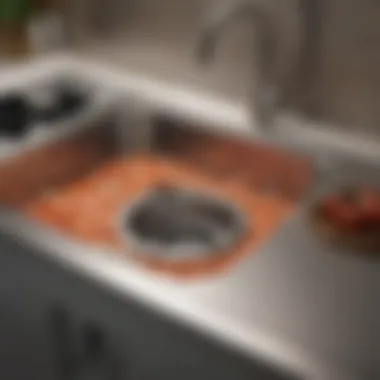
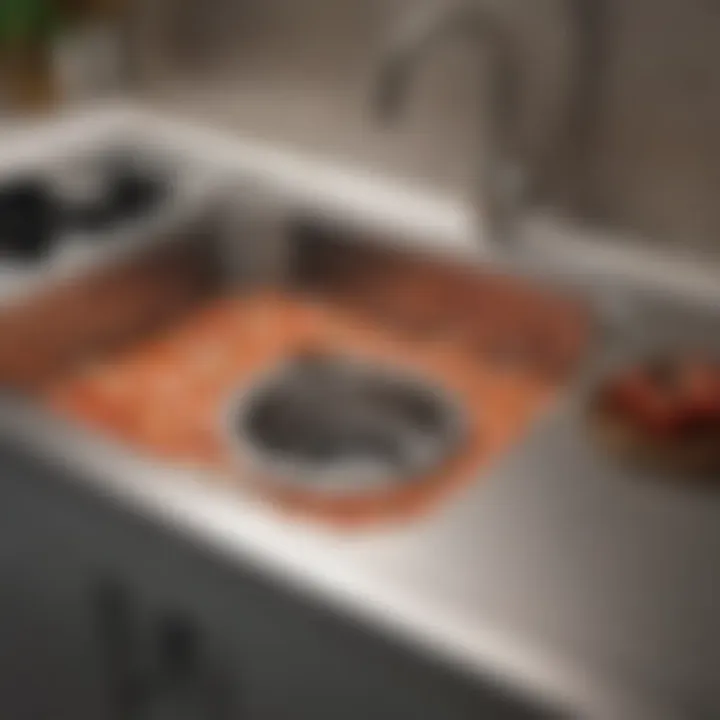
A garbage disposal unit comprises several components that can malfunction over time. The motor, for example, may wear out, resulting in a failure to function effectively. Other components, like the reset button or blades, may also become affected by heavy use or neglect.
Common indicators of component failure are:
- Unusual noises during operation.
- Vibration or shaking of the unit.
- A complete stop in functionality.
Maintenance includes checking and replacing worn-out parts, ensuring the longevity of the unit. If you notice recurring issues, it may be time to evaluate the entire system for faulty components.
Improper Use of Disposal
Many drainage issues arise from improper use of disposal systems. Home cooks might misuse the disposal by overloading it or disposing of unsuitable materials. This behavior often leads to clogs, breakdowns, and increased wear on the unit.
To avoid this:
- Familiarize yourself with acceptable disposal materials.
- Follow the manufacturer's guidelines and recommendations for use.
- Use the disposal as intended: small, manageable amounts of food waste should be introduced gradually.
Educating oneself on how to use garbage disposals can profoundly impact their efficiency and lifespan, decreasing the likelihood of drainage issues.
Initial Troubleshooting Steps
In kitchen disposals, drainage issues can often stem from several sources. Before delving into the more complex repair processes, it is essential to prioritize initial troubleshooting steps. These actions serve as a foundation for identifying the problem, allowing for a more systematic approach to eventual repairs.
Starting with a clear understanding of these initial steps can save time and resources. By checking the power supply, inspecting for obstructions, and utilizing the reset button, you can efficiently determine if the issue is something fundamental that can be addressed easily or if it requires a deeper intervention. Each of these steps is critical to ensuring that you do not overlook a simple issue before moving onto the more complicated tasks.
Checking Power Supply
This step might seem basic but verifying the power supply is fundamental. If the disposal does not turn on, it can lead you to believe it's broken. First, check if the unit is plugged in correctly. Sometimes, connections become loose over time. If the plugs are secure, inspect the circuit breaker panel. The disposal could have tripped a breaker, requiring a simple reset. In some cases, the outlet may not be functioning, so testing it with a different device may help identify the issue. If power supply issues persist, consider consulting an electrician for further evaluation.
Inspecting for Obstructions
Obstructions in the disposal unit or its drain can cause significant drainage problems. Start by turning off the disposal and use a flashlight to inspect the chamber. Look for any visible debris that could be blocking the blades. Objects like utensils or overly fibrous foods can create blockages. If you see anything, use tongs or pliers to carefully remove it. Never reach in with your hands, as the blade may be sharp.
Furthermore, check the drain pipes leading from the disposal. Even if the unit appears to be working correctly, any blockage in the pipes can lead to improper drainage.
Using the Reset Button
Most garbage disposals are equipped with a reset button located on the bottom or the side of the unit. This button is often overlooked, yet it plays a crucial role in resetting the disposal after it has been overloaded or has experienced a jam. After checking the power supply and inspecting for obstructions, pushing the reset button may solve your problem.
It is important to follow the correct sequence: turn off the power, clear any blockages, and then press the reset button. Wait a moment before turning the disposal back on to ensure that it responds appropriately.
A proactive approach to these initial troubleshooting steps can prevent minor issues from escalating, saving you time and reducing repair costs.
By diligently following these recommendations, you develop a better understanding of how your disposal functions and how to maintain it effectively.
Tools and Materials Required
When addressing kitchen disposal drainage issues, having the right tools and materials is crucial. The efficiency of your repair process significantly depends on your preparation and the adequacy of your toolkit. Being well-equipped helps in resolving problems effectively and minimizes the risk of causing further damage to your disposal or plumbing system. This section highlights the essential tools and safety equipment needed for effective troubleshooting and repairs.
Essential Tools
A proficient approach to fixing kitchen disposal problems begins with essential tools. Here are the key tools you will need:
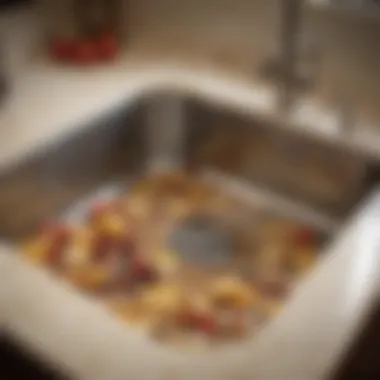
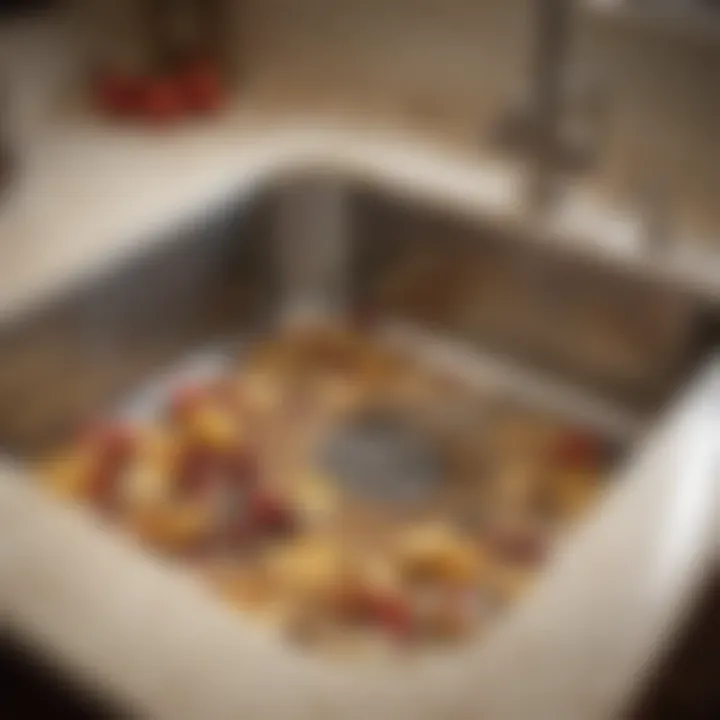
- Screwdriver: A standard or Phillips screwdriver is often necessary for removing or tightening screws during the removal or installation process.
- Pliers: These are useful for gripping, twisting, or bending wires and pipes as well as for removing stubborn components.
- Wrench Set: Adjustable wrenches are essential for loosening and tightening plumbing connections without stripping them.
- Plumber's Snake: This tool is effective for clearing stubborn clogs that basic methods or plungers cannot resolve.
- Bucket: Keeping a bucket handy will help catch any residual water or waste, making cleanup easier.
- Flashlight: Adequate lighting assists in inspecting hard-to-see areas, especially under the sink or inside the disposal unit.
Adequate preparation with these tools enables quicker and more efficient repairs, saving time and hassle during the process.
Safety Equipment
Operating a kitchen disposal system involves potential hazards. Therefore, ensuring safety while performing repairs is key. Here are safety equipment items you should consider:
- Gloves: Heavy-duty rubber or latex gloves protect your hands from sharp objects and harmful bacteria often found in food waste.
- Safety Goggles: Protecting your eyes from flying debris or splashes is essential, especially when using tools or when cleaning the disposal unit.
- Face Mask: If you are sensitive to dust or odors, wearing a mask can prevent respiratory irritation while cleaning or troubleshooting.
- Slip-resistant Shoes: Wearing appropriate footwear minimizes the risk of slipping on wet surfaces while working in the kitchen.
Using safety equipment is not just about personal protection; it enhances your efficiency by allowing you to focus on the task without distraction from safety concerns.
"Preparation with the right tools and safety gear is half the battle won in resolving kitchen disposal issues.”
By making sure you have these tools and materials on hand, along with prioritizing safety, you are well-prepared to tackle any drainage issues that may arise.
Step-by-Step Repair Process
Understanding how to properly repair a kitchen disposal unit is crucial for maintaining its efficiency and longevity. This section will outline the step-by-step repair process, aimed to empower readers with practical knowledge for resolving common issues. Being thorough yet straightforward is key for ensuring that even those with limited DIY experience can follow along effectively.
The benefits of a systematic approach include:
- Improved functionality: A well-maintained disposal operates more effectively.
- Cost-saving: Avoiding professional help can save money.
- Increased longevity: Proper repairs contribute to the life of the unit.
- Personal confidence: Successfully executing repairs enhances skills and self-efficacy.
Removing the Disposal Unit
The first step in any repair process is removing the disposal unit safely and systematically. Before starting, ensure the electricity is off. Locate the circuit breaker and switch it off to avoid any accidents.
Follow these steps to remove the unit:
- Detach the drain pipe: Use a pliers to loosen and remove the clamp. This is often a straightforward process.
- Disconnect the dishwasher drain hose if your disposal is connected to one. A simple twist or pull should suffice.
- Locate the mounting screws or clamp that holds the disposal in place. You will typically find these on the underside of the unit.
- Using a screwdriver, take out the screws or loosen the clamp and remove the disposal from the sink.
Make sure to keep all screws in a secure place to avoid losing them, as you will need them later during reinstallation.
Cleaning the Inside
Once the unit is removed, cleaning the inside is critical to ensure optimal performance. Food particles and grease can accumulate and cause further problems if left unattended.
Here’s how to effectively clean the inside:
- Rinse with water: Start by rinsing the disposal with warm water. This helps to remove loose debris.
- Use a brush: A bottle brush is effective for scrubbing the walls of the disposal. Ensure you reach all areas and remove built-up grime.
- Dish soap: Apply a small amount of dish soap to the brush for deeper cleaning. This will help break down any grease present.
- Sanitize: To eliminate bacteria and odors, a mixture of baking soda and vinegar can be used. Pour half a cup of baking soda followed by a cup of vinegar and let it sit for 10 minutes. Then, rinse thoroughly with water.
The cleaning stage is vital—not only does it clear obstructions, but it also prolongs the life of your disposal.
Reinstalling the Disposal
After cleaning, carefully reinstalling the disposal is the final yet crucial part of the repair process. Follow these straightforward steps to ensure a secure fit:
- Positioning: Place the disposal back into its mounting assembly. Ensure it fits snugly and all slots align correctly.
- Secure with screws: Reinsert the screws or tighten the clamp that holds the disposal in place. Make sure it is tightly secured to prevent any movement.
- Reconnect the drain and dishwasher hoses: After securing the unit, reconnect all the hoses you previously detached. Ensure that they are tightly fastened to avoid leaks.
- Restore power: Finally, turn on the circuit breaker again to restore power to the unit.
- Test: Run cold water through the disposal while operating it to check for leaks and ensure smooth operation.
In summary, following the step-by-step repair process is crucial for anyone looking to address kitchen disposal issues effectively. Each step—from removing the unit to cleaning and reinstalling—serves a specific purpose in maintaining the unit's functionality. Completing these repairs can mitigate future plumbing issues and enhance overall kitchen efficiency.
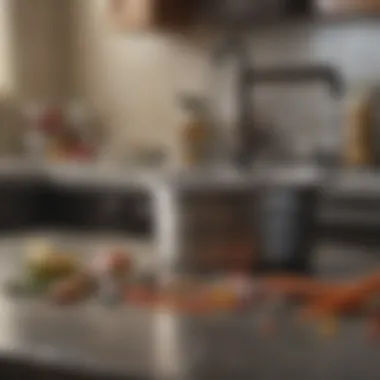

Preventive Measures
Preventive measures are vital for maintaining the efficiency and longevity of kitchen disposal systems. These practices help mitigate common drainage issues and ensure that the disposal operates smoothly. By integrating preventive strategies into the regular kitchen maintenance routine, one can avoid escalating problems that may require professional intervention.
Regular Maintenance Tips
Regular maintenance of the kitchen disposal aids in its optimal performance. Here are some key tips:
- Run Water While Using the Disposal: Always allow cold water to flow during operation. This aids in carrying food particles through the pipes, preventing potential clogs.
- Occasional Grinding of Ice: Grinding ice cubes one to two times a month can help clean the disposal blades and remove buildup.
- Use Citrus Peels: To keep the disposal smelling fresh, grind peels from lemons or oranges. This helps in odor control and adds a pleasant scent.
- Inspect for Debris: Regularly check for foreign objects or excessive food buildup within the disposal. If something is lodged, address it promptly to avoid damage.
- Check Seals and Connections: Periodically inspect seals and connections for any signs of wear or leaks. A well-sealed disposal is crucial for preventing blockages in drainage.
These practices not only maintain the disposal’s performance but also contribute to the overall hygiene of the kitchen.
Proper Disposal Usage Guidelines
Understanding how to use a kitchen disposal properly is essential for avoiding unnecessary issues. Here are some guidelines:
- Limit Certain Foods: Avoid disposing of fibrous materials such as celery, corn husks, or banana peels. They can tangle around the blades and lead to clogs.
- No Oils or Grease: Never pour oils or grease down the sink. They can solidify, creating barriers in pipes and leading to blockages.
- Use Small Amounts of Food Waste: Introduce food waste gradually rather than dumping a large amount at once. This helps maintain the flow through the disposal without overwhelming it.
- Hard Foods Moderation: Foods like bones can damage the disposal mechanism. Limit grinding hard items to protect the blades and motor.
Adhering to these usage guidelines can significantly reduce the likelihood of drainage issues, ensuring that your kitchen disposal operates efficiently.
Integrating these preventive measures and usage guidelines into your kitchen routine will prolong the life of your disposal unit and enhance its performance. Proper care translates to fewer worries and a smoothly functioning kitchen.
Identifying When to Call a Professional
Recognizing the right moment to seek professional help with kitchen disposal issues is a crucial aspect of maintenance and repair. Relying solely on DIY methods may seem tempting, but there are instances where expert intervention is essential. Understanding when to call a professional can save time, money, and prevent further damage.
Signs of Major Issues
There are several indicators that suggest a problem with your garbage disposal might be more than a simple clog. Pay attention to the following signs:
- Persistent Clogging: If your disposal clogs repeatedly despite regular maintenance and proper usage, it may signal an underlying issue.
- Unusual Noises: Grinding, rattling, or other strange noises can indicate that something is wrong inside the disposal unit. This may include foreign objects or mechanical failure.
- Leaks: Water pooling under the sink or noticeable leaks from the unit may reveal a failing seal or cracked component.
- Continuous Running: If the disposal keeps running without your command, there may be an electrical issue at play, warranting professional assessment.
- Foul Odors: A persistent bad smell, even after cleaning, can suggest trapped debris or a malfunctioning disposal.
These signs clearly indicate that the disposal may need a more thorough inspection than you can provide.
Understanding Limitations of DIY Repairs
While many minor issues can be resolved through DIY methods, there are limitations to this approach. Recognizing these limits can help prevent further complications:
- Complex Repairs: If the disposal requires extensive disassembly or repair of internal components, a professional's expertise is often necessary.
- Electrical Problems: Diagnosing electrical issues can be tricky. If you face issues related to wiring or power, calling an electrician or professional technician is prudent.
- Replacement Needs: Sometimes the disposal unit may need to be replaced entirely. Deciding on the right replacement model and ensuring proper installation may require professional guidance.
- Safety Concerns: Working with electrical devices and plumbing can be dangerous. If you're uncomfortable or unfamiliar with the potential risks, it is better to let a professional handle it.
In summary, acknowledging the limitations of DIY repairs and recognizing signs of major issues is vital for effective kitchen disposal management. Proper timing in seeking help can keep your kitchen running smoothly.
Epilogue
The significance of the conclusion in this article lies in its ability to synthesize the various challenges and solutions pertaining to kitchen disposal drainage issues. Summarizing key insights helps in reinforcing the reader's understanding of not only identifying and resolving these issues but also embracing proper management practices to ensure long-term functionality of kitchen disposals. This final section serves as a reminder that implementing the knowledge gained can lead to a more efficient kitchen operation.
Summary of Key Points
- Understanding Kitchen Disposals: Knowledge of how disposals function is crucial for troubleshooting.
- Common Drainage Issues: From clogs to faulty components, recognition of these issues aids in rapid responses.
- Troubleshooting Steps: Initial checks like power supply and obstructions can save time and costs.
- Repair Process: A detailed, step-by-step approach simplifies the repair of kitchen disposals, making it accessible to homeowners.
- Preventive Measures: Regular maintenance keeps disposals in optimal condition and prevents future issues.
- When to Seek Help: Knowing when to involve professionals is vital in preventing escalation of problems.
Encouragement for Proper Management
To encourage proper management, it is essential for homeowners to incorporate the practices discussed in this article. Regular inspections, appropriate usage of disposals, and timely repairs guard against unforeseen complications. A well-maintained kitchen disposal not only enhances cooking efficiency but also supports overall kitchen hygiene.
By understanding the importance of these systems and committing to proper management, individuals can ensure their kitchens remain a hub of culinary creativity and functionality. Furthermore, maintaining an optimal working disposal promotes sustainability and waste management within the home.
A proactive approach is more beneficial than a reactive one.















